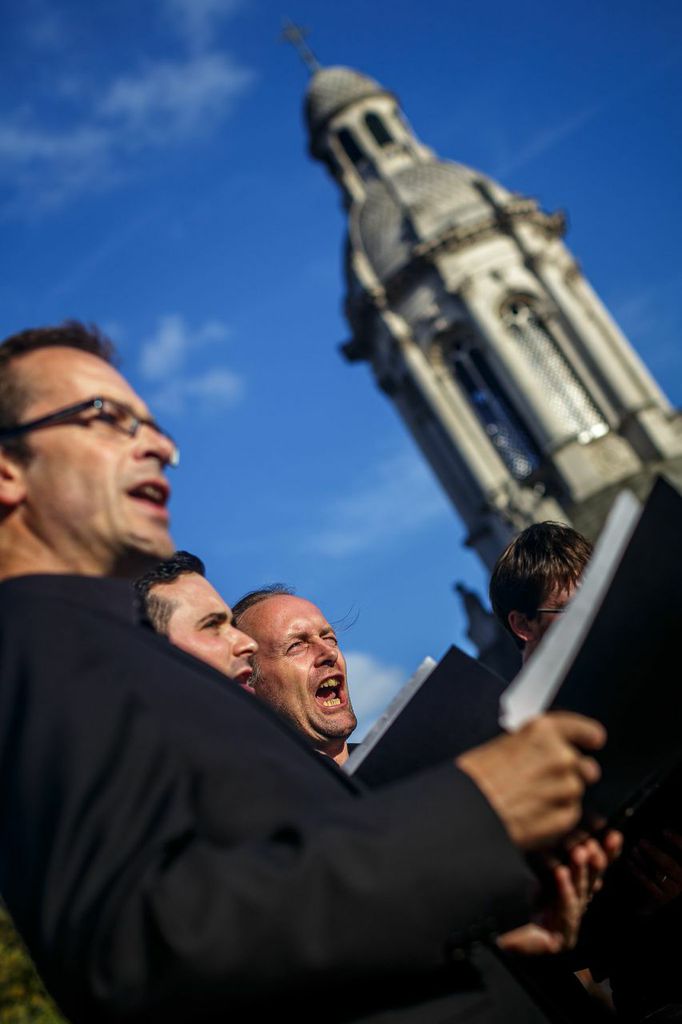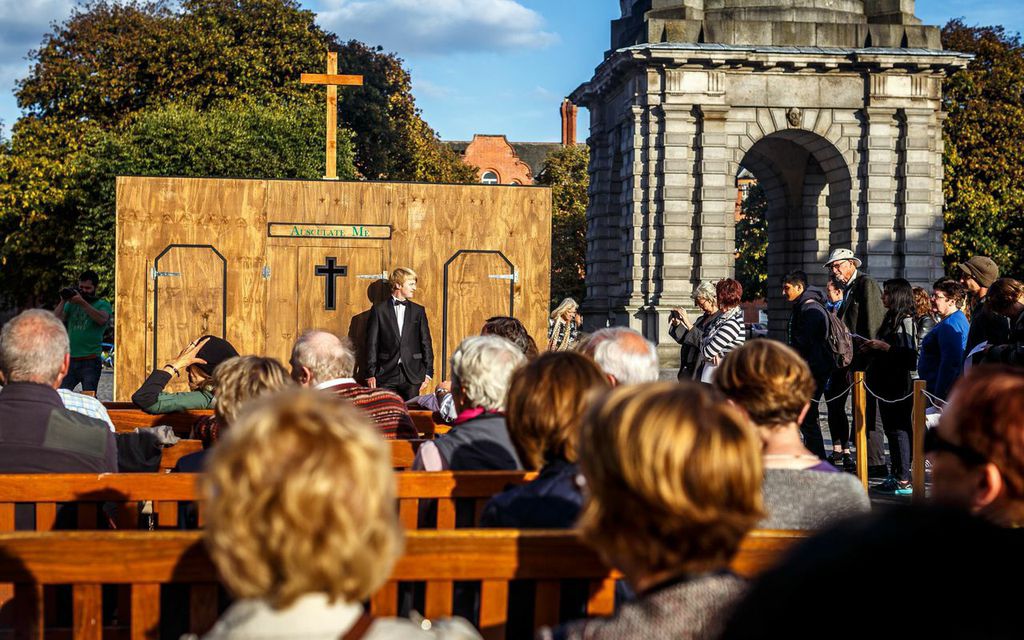Rachel Lavin | Magazine Editor
Passerybys may have noticed the confession-like box set up outside the church in Front Square in front of a row of benches. On passing it first I assumed it may have been one of the college church’s slightly extravagant attempts to be more visible in their practise but it is, in fact, an art installation that seeks to highlight the issue of women’s concealed pregnancies in Ireland, and so, is aptly named the ‘Pregnant Box’.
The installation is open to the public as part of the Discover Research evening, a european wide event that aims to showcase the university’s research in creative ways and there are 53 events on show around Trinity from 5pm to 10pm tonight.
As the intrigued crowd gathered around the confession box and seating in Front Square, Dr. Catherine Conlon described the event as the ‘opportunity to take creative arts practise research and bring it into a domain and format that brings the public into the academy and showing the way our work is meaningful and relevant to government policy.’

The piece in question portrays the work of Dr. Conlon, who completed a research project on concealed pregnancies in contemporary Ireland don through the the School of Social Work and Social Policy and the HSE Crisis Pregnancy Programme. Set up directly outside the campus church the installation is certainly provocative and the religious bodies in Trinity have already received complaints in the run up to the performance. But Conlon insists it is ‘not intended to engage with political polemics but it is intended very much to take the experiential account of crisis pregnancy and translate it into a piece of music, to convey the emotional meaning the women told of.’
Conlon who collaborated with Dr. Evangelia Rigaki in the School of Drama Film & Music created pieces that ‘represent the judgement of the society on the woman. The pieces of text that have come from my research on women conecealing pregnancy that have been translated into a liberetto by Evangelia and the poet, W.N. Herbert.’
As the event officially begins, the Mornington Singers, under the direction of Dr Orla Flanagan, gathered in front of the confession box and sang lyrics in a series of syncopated consecutive rounds with lines lead by the women singers singing ‘I am a box for life’, ‘Inside your box I have no voice or choice’. Meanwhile the men, for example, sing ‘This girl has to see a social worker’ and ‘One night stand.’ In the shining daylight of Front Square with a crowd gathered sitting in the pews in front of the confession-like box, it is both a familiar and startling setting.
The confessional box that we are facing is called the ‘Pregnant Box’ with the words above the door reading ‘Asculate me’ which means ‘Listen to what’s inside me’. Once the choir part the viewers are invited, as though in a real church, to sit inside the confession box. Conlon said the aim of this is ‘To present that very claustrophobic feeling that the women described and to evoke the experience that I heard of women concealing pregnancy and the sense that they had a feeling of being very confined. of having this very internalised experience that they could not vocalise and could not share.. That’s conveyed and transfered to the audience member and that you in some way inhabit that world view of hers.’
Indeed as I step inside the box it is eerily quiet and isolated. A cross shaped window in the door is the only light and outside the songs of the choir are muffled but still audible. The inside of the box is coated with red velvet but there is no grate through which I can see who is on the other side. To my right a man clears his throat and to my right a woman beathes heavily. After a moments silence I realise I am to call out a number from 1 to 7 and in doing so the sharp whistle of a flute on my right begins to sound. Playing prolonged notes the woman on my left begins to sing in an opera style.
‘Jesus’. Pause.’You can’t..You can’t’. The flautist plays a short riff. ‘Put on a bit of weight in this town but be married’..’You are expecting’. Silence.
My intimate performance ends and the door opens only to find the full lights of outside beamed in as the entire congregation I was just part of stares back at me and the heightened cries of the choir becomes suddenly loud again.
The experience was intense and eerie and as I walk away with shivers down my spine, feeling somehow ashamed and frightened by it. Of course, this is intentional. Conlon explains ‘When you hear the woman’s own words set to music inside the box and when you hear the ways in which the the judgement by society is performed by the choir, we are trying to evoke that sense that the women felt when they were pregnant.’
A provocative and topical interactive piece, the event itself, which will continue until 9pm tonight has been, unsurprisingly the subject of controversy in the run up to its opening. Conlon explains ‘We have had mixed reactions but the whole thing is very challenging. I think the whole thing is about women finding that they cannot tell others that they’re pregnant is a very challenging idea.’

However, is the art piece attempting to challenge the Irish Catholic Church especially? Conlon insists ‘The position of the confessional box in relation to the church was not a factor. It was simply intended to be set up in the Front Square of Trinity College’. She does however admit that the confession box is a ‘cultural reference, as we all need at times to confess something but that what we feel the need to confess tells us as much about the society as about us as a person.” If that is true, then it is safe to say that the ‘Pregnant Box’ casts a sad and harrowing reflection on the life of women with crisis pregnancies in modern Ireland.
Be it the experience of anxious desperation and isolation within or the overwhelming sense of judgment outside, the pregnant box is a powerful interactive insight into one of the foremost issues of our age. If you can make it before 9pm tonight, it is certainly worthwhile experience that will stay with you and send shivers down your spine.
Correction: September 27, 2014
An earlier version of this article incorrectly stated the name of the choir involved in the performance. They are the Mornington Singers.
Photos by Jiaying Lau for The University Times Magazine.







